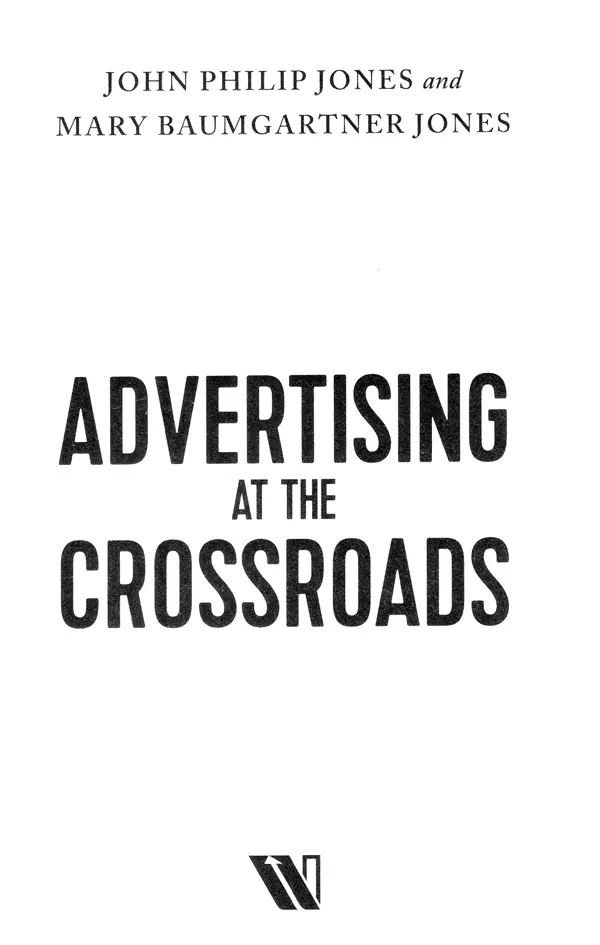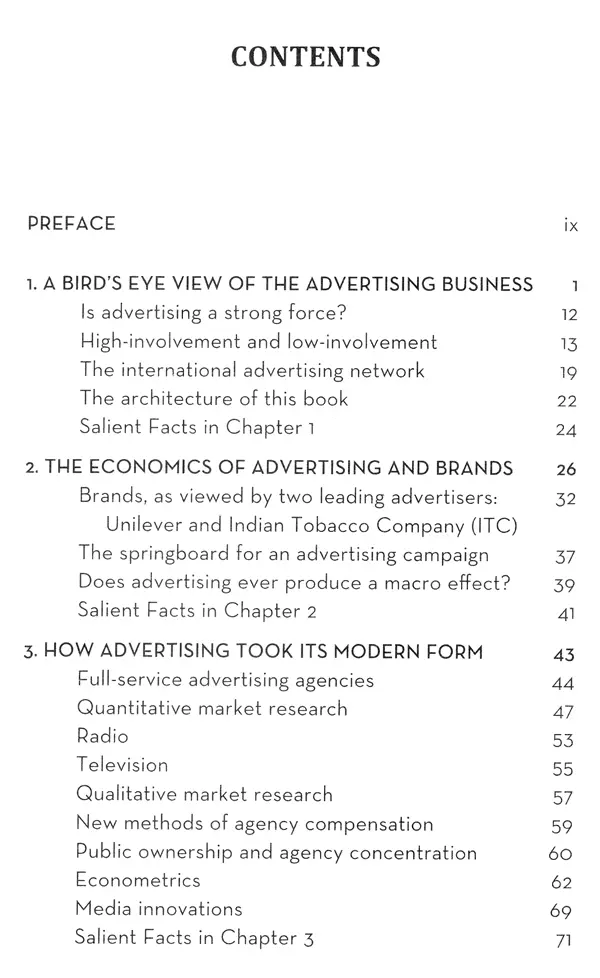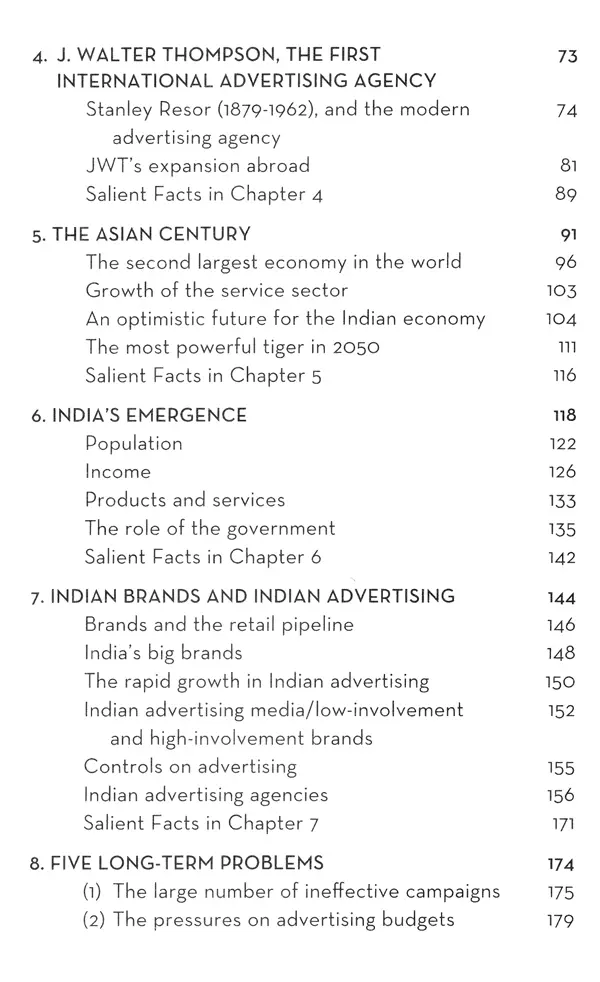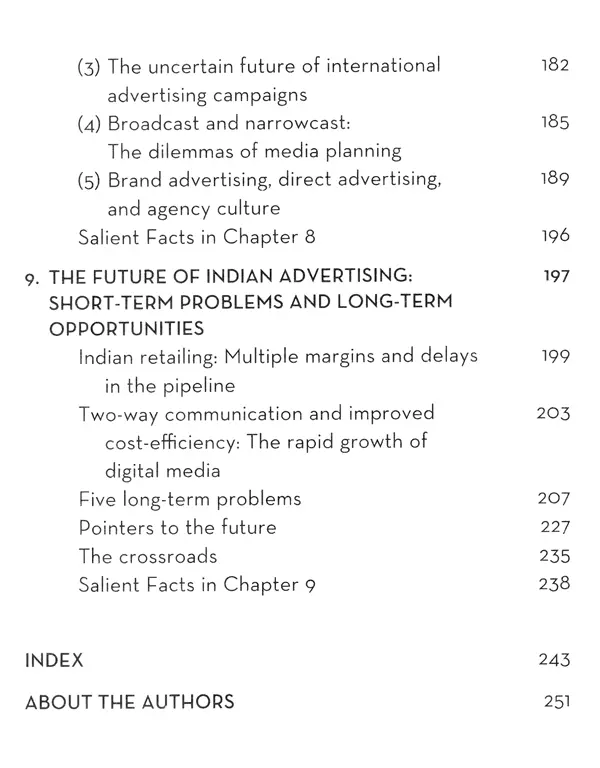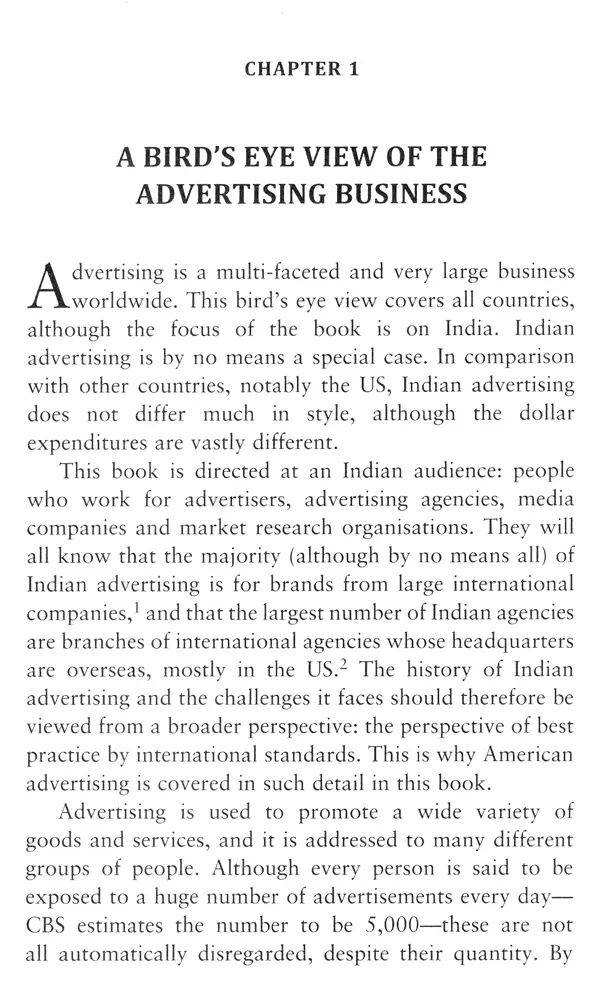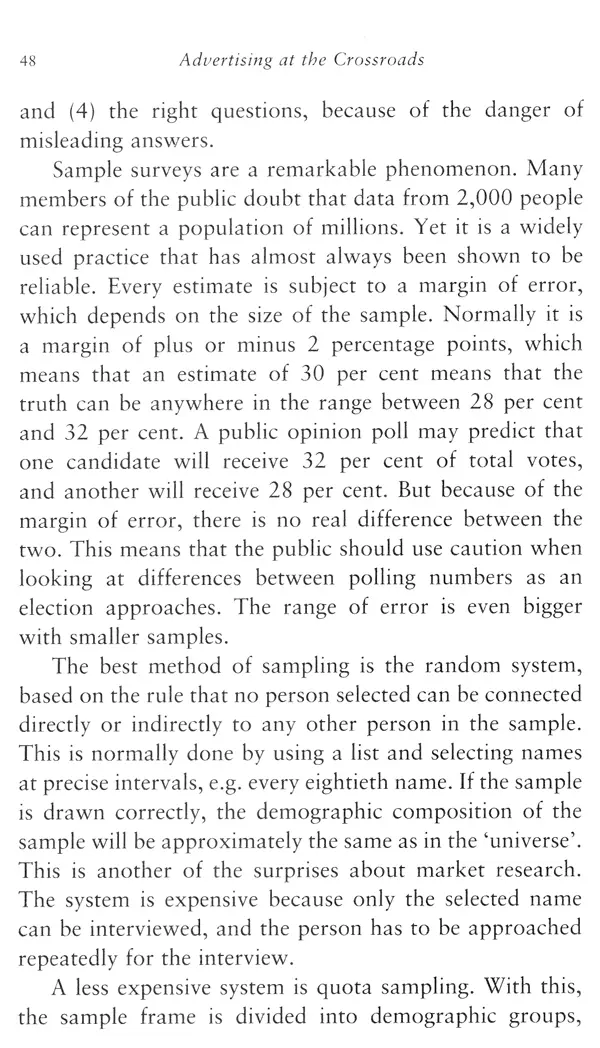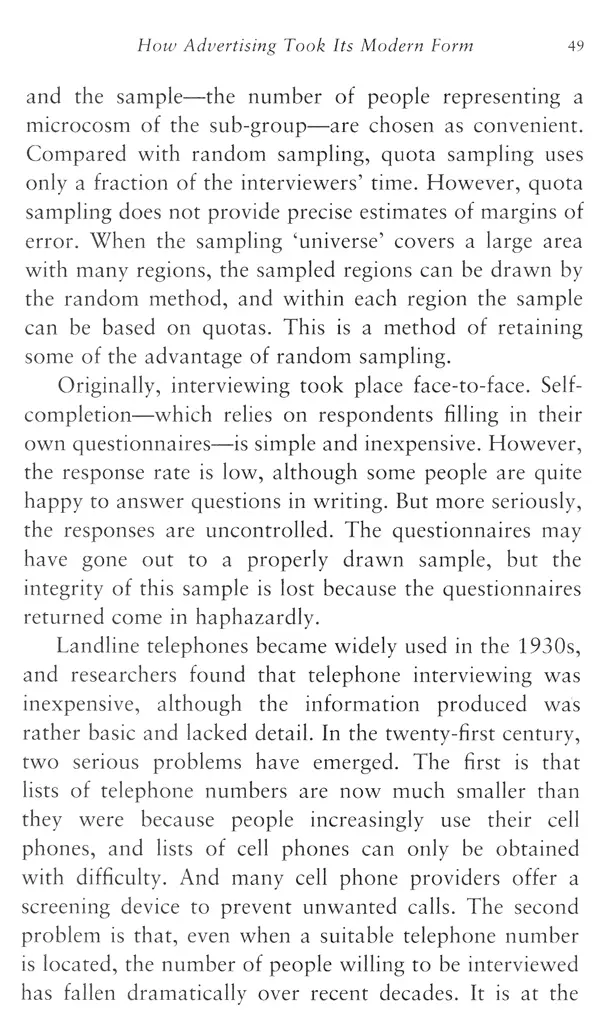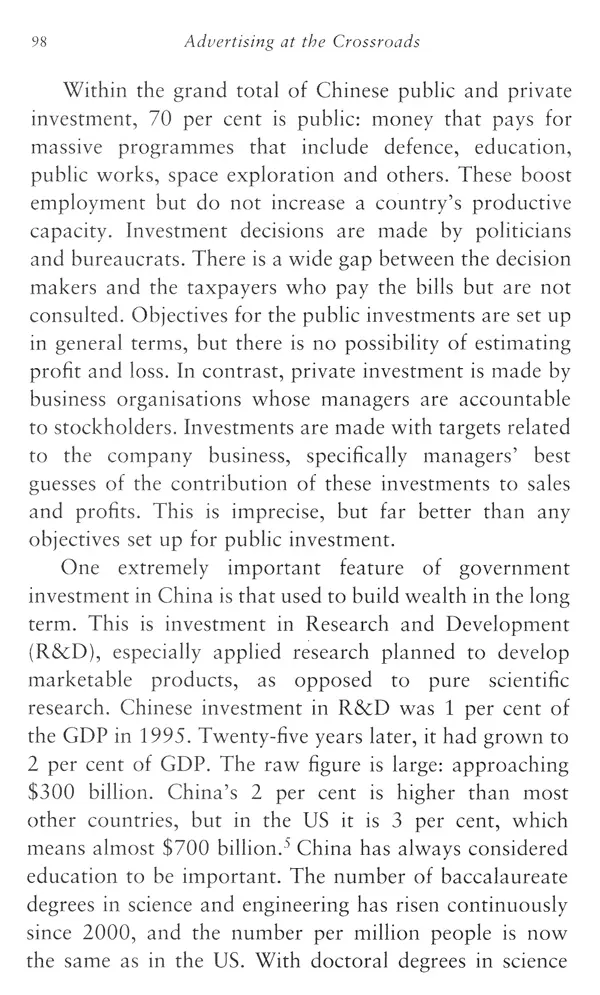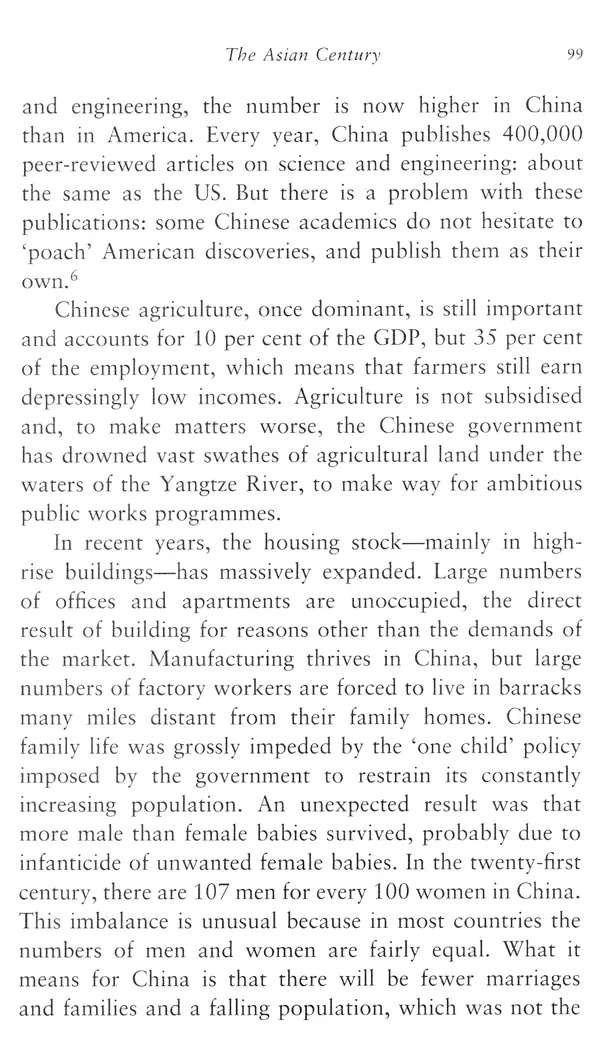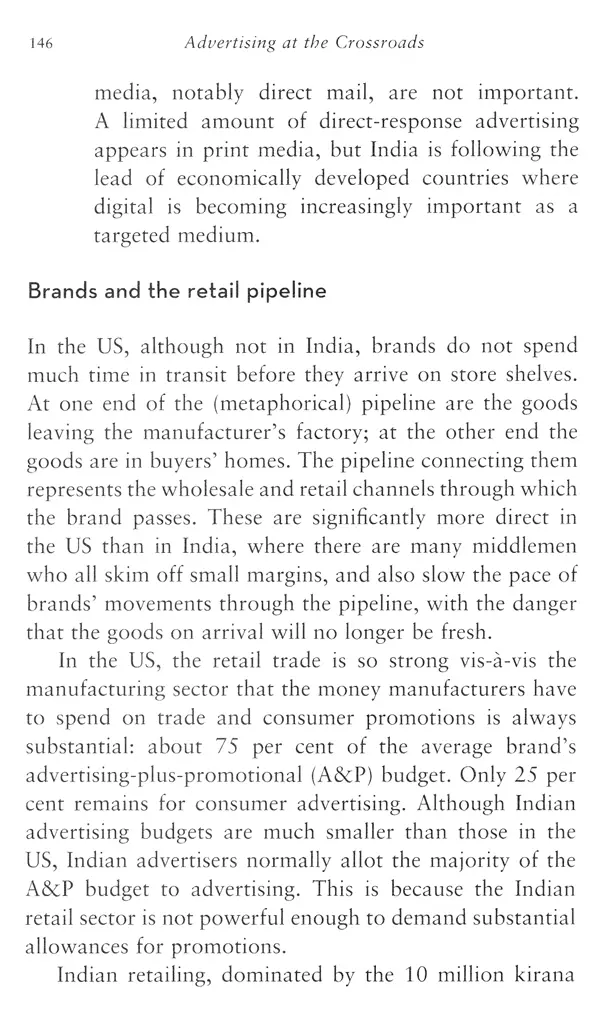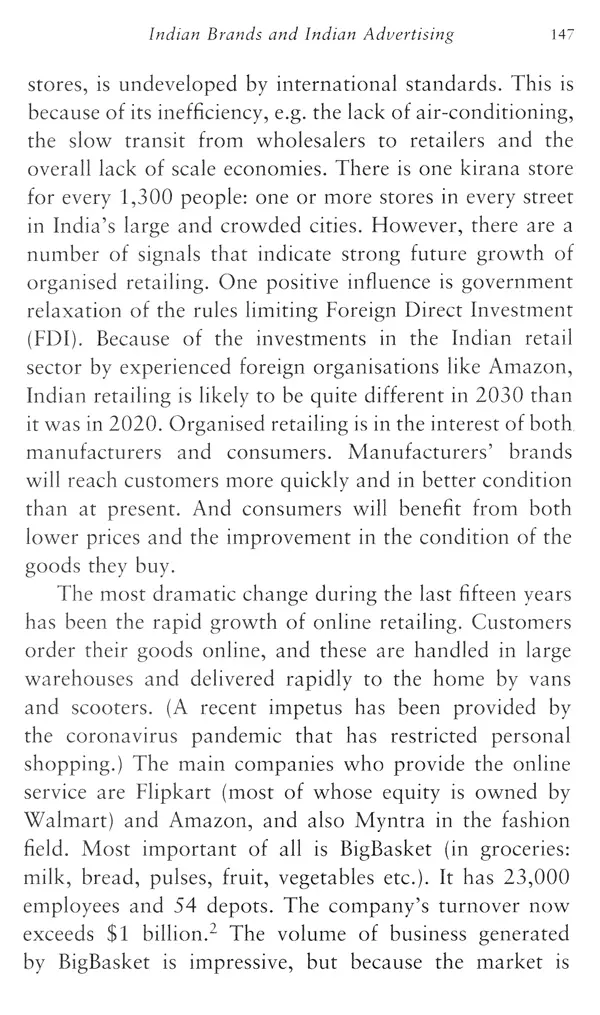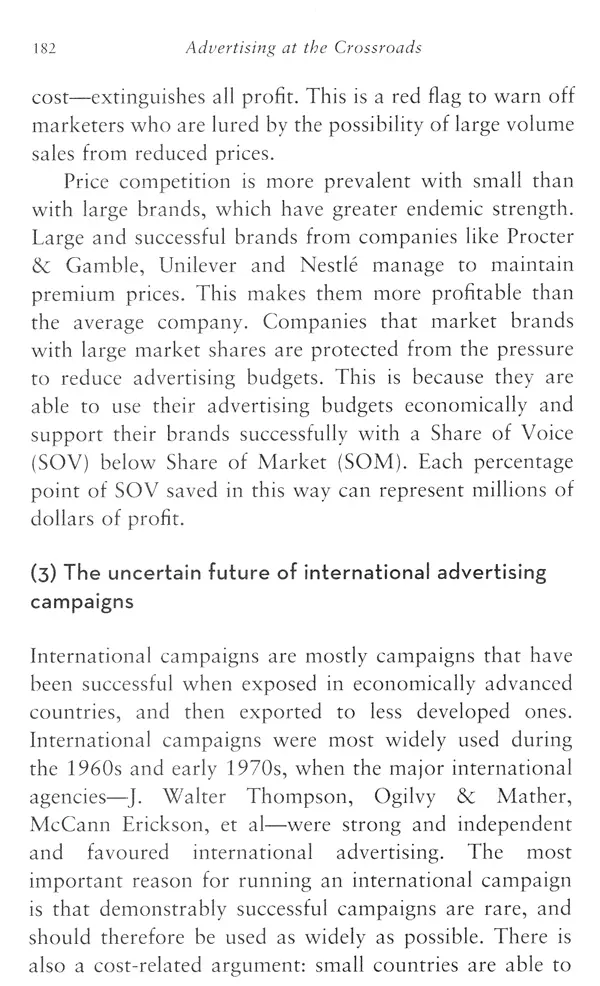
Advertising at the Crossroad
Book Specification
| Item Code: | UBE954 |
| Author: | John Philip Jones and Mary Baumgartner Jones |
| Publisher: | Westland Publications Pvt Ltd., Chennai |
| Language: | English |
| Edition: | 2021 |
| ISBN: | 9789391234867 |
| Pages: | 266 |
| Cover: | HARDCOVER |
| Other Details | 9.00 X 6.00 inch |
| Weight | 390 gm |
Book Description
The way we do business had, until very recently, remained largely static for over two centuries: large outputs, small profits per units, manufacturing efficiency and oligopolistic competition. Supporting the system was print and broadcast advertising. But in the last couple of decades, the world has seen a dramatic shift. Many advertised goods and services now tend to be high- involvement, and there is a shift to looking for fewer sales and more profit per unit as the ideal. Adding the greatest amount of flux to this model are social and digital media.
In short: advertising is at a crossroads. The old methods still work, but they promise no growth. It is the new digital path that will lead sales to grow. Are advertising agencies and marketers prepared for the change? Is a mere tweak of existing operating methods sufficient? How is advertising to become digitally native?
Renowned marketing and advertising experts John Philip Jones and Mary Baumgartner Jones compare the US and Indian experiences to investigate what this shift has meant for the industry as well as for business in general. Advertising at the Crossroads is both a lucid guide to decision-making as well as a deeply researched and original look at this challenging and exciting new terrain.
JOHN PHILIP JONES, an American citizen born in Britain, graduated from Cambridge University with the Economics Tripos (BA with Honours, and MA). He had two careers. The first lasted for twenty-seven years in the advertising business, mostly with J. Walter Thompson in Britain, the Netherlands and Scandinavia, as an account director on major brands from Unilever, Nestlé and other large international companies.
His second career, which also lasted twenty-seven years, was as a member of the faculty of the Newhouse School of Public Communications, Syracuse University, New York. He was a full professor with academic tenure, and is now emeritus. He is the author of 23 books and 70 articles, mainly in professional journals.
MARY BAUMGARTNER JONES graduated from Mount Holyoke College with a degree in International Relations. Her twenty-year career in New York included account management and strategy roles at major advertising agencies. She then took a job with her client, HBO. At HBO Mary worked on the advertising team before leading an interactive team responsible for overseeing hbo.com, exploring interactive TV, and launching the e-commerce business for the network. Mary and her family left New York to move to Maine where she became a partner at a small national advertising agency. Mary currently serves as Vice President for Communications and Public Affairs at Bowdoin College.
During the long boom that followed the end of the Dond World War, half of all national advertising campaigns in the United States (US) were for low- involvement goods and services, brands of fast-moving consumer goods (FMCG) in particular: packaged food and drinks, over-the-counter pharmaceuticals, toiletries, household cleaning products, et al. However, with FMCG, using media to target advertising is difficult. The most important advertising medium has been broadcast television, which covers virtually all homes. Although spots can be bought in specific programmes, the demographics of the audience for such programmes do not usually coincide with the demographics of any brand's target group. The target audience is usually existing buyers of the brand, to protect the franchise against competitors and to boost purchase frequency.
The process can be described as advertising for the purpose of seeking potential buyers. In the twenty-first century, American FMCG have stopped growing because of the high consumption levels; shares of individual brands do not vary more than one or two percentage points in any year, and most new brand introductions are failures. To the extent that advertising contributes to this situation, it is as a force for continuity and not for change.
Book's Contents and Sample Pages
